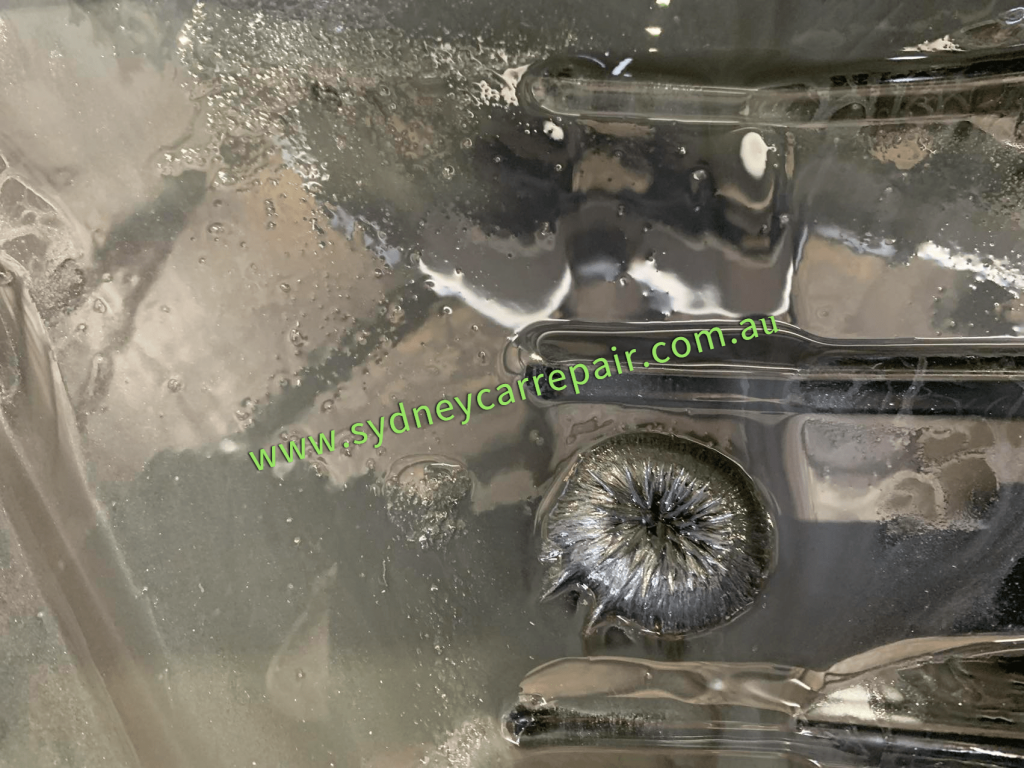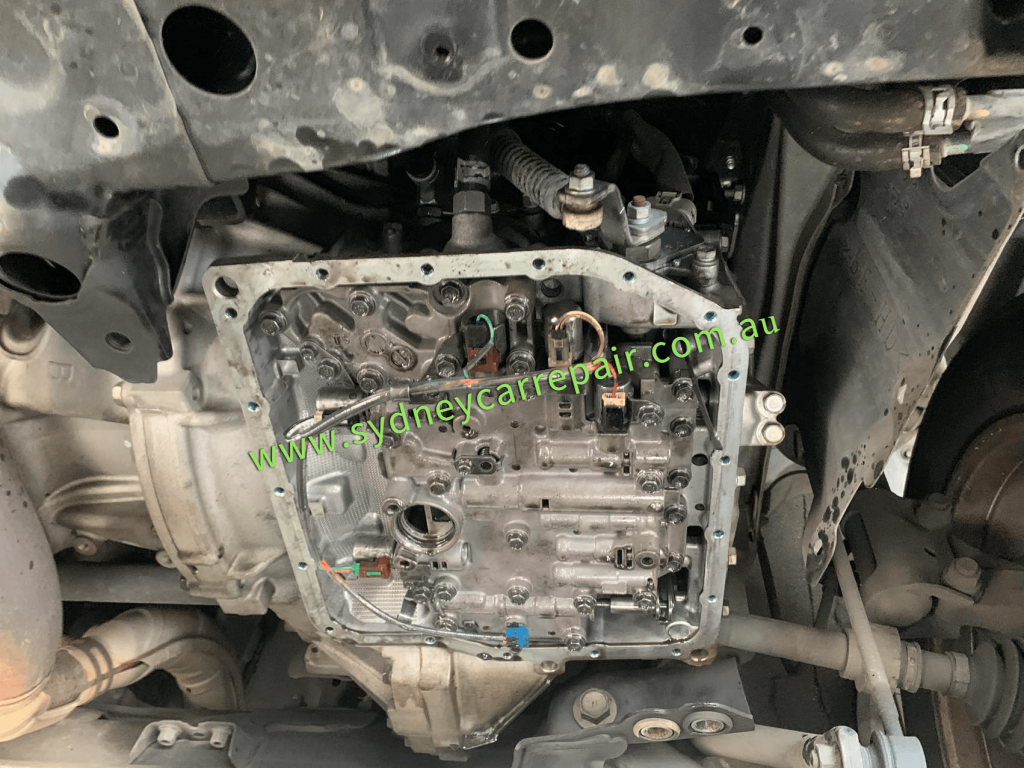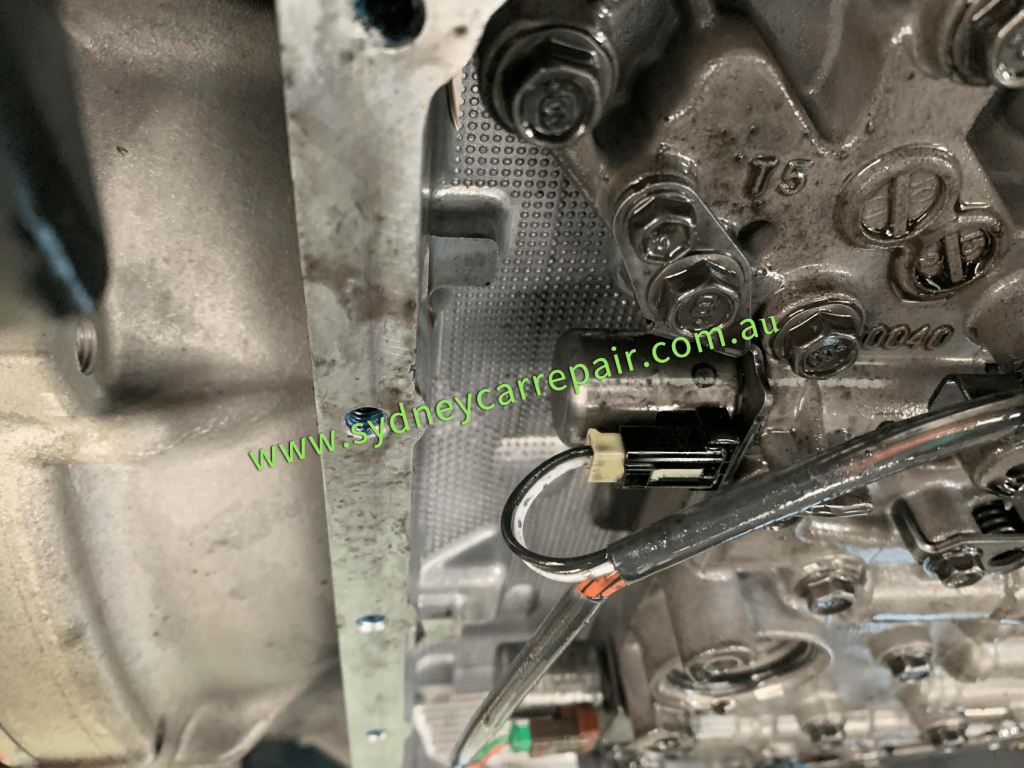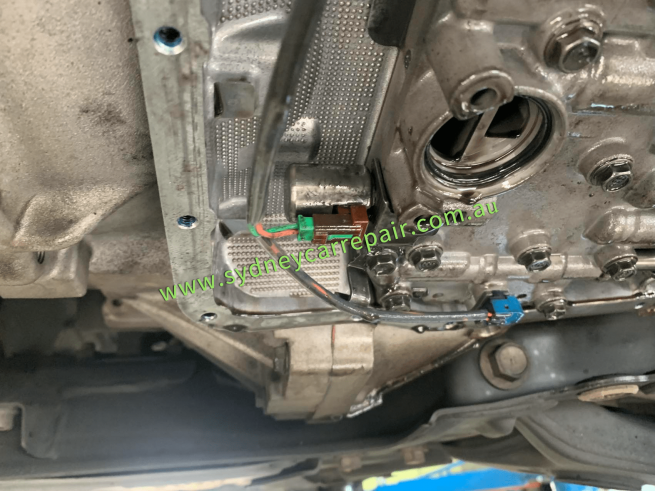Vehicles’ vital fluids normally perform two important functions: lubricating and cleaning. As the fluid circulates through the parts, it gathers the dirt and metal shavings that can accumulate over time. If you’re lucky, this debris will settle on the bottom of the pan or housing and not circulate through the system. That’s why some auto shops use machines that perform a transmission fluid flush, ensuring that more of this debris is removed before any new transmission fluid is poured into the vehicle.
Nothing prolongs vehicle life more than regular fluid changes. In automatic transmissions/transaxles, the recommended service interval is about every 30,000 miles or 30 months. (Check your owner’s manual or service manual for your car’s specifics.) The automatic transmission fluid (ATF) should be changed sooner if its dipstick reveals dark or burnt-smelling fluid.
How to Detect a Faulty Transmission Filter
The transmission filter keeps contaminants out of the transmission fluid. There are a number of problems that can arise with the filter, which reduce its ability to do its job properly. Being aware of the signs to look out for will give you an idea of when it is necessary to undertake a repair.
Noise
If you hear a rattling that cannot be explained in any other way, checking the transmission will be worthwhile. If a defect has developed, it will need to be replaced or fasteners will have to be tightened. Where the filters become blocked with debris, this can also be the cause of noise.
Leakage
In the event that the transmission filter is not fitted properly or there is a defect to the transmission itself, it could result in leakage. There are a number of seals and gaskets in place as part of the transmission, which can develop cracks that cause a leak. Similarly, if they become dislodged or misaligned, a leak can also result. You will find that signs of leaks will be left behind after the car is moved from where it has been parked.
Contamination
The purpose of the transmission filter is to keep contaminating particles out of the transmission fluid. If the filter fails to do its job properly, the transmission fluid will quickly reach a point where it is too dirty to do its job efficiently. Where the contamination reaches a certain level, it can burn and lead to transmission repair being required. Check the transmission fluid regularly, not just for its level, but to see if it is clean.
Inability to Change Gears
If you find that you are unable to change gears easily or it fails to work at all, a problem may have developed with the transmission filter. Similarly, if the gears grind for no reason or the vehicle surges when the gears are changed, the problem may be as a result of a faulty transmission filter.
Burning Smell or Smoke
Where the filter has become blocked with particles that it is designed to limit, it can result in a burning smell. In extreme cases, it can result in the scary sight of smoke being emitted from the engine
DIY transmission fluid and filter changes
Even those of us who change our own oil often cringe at the prospect of draining ATF. Because many transmission pans don’t have drain plugs, changing the fluid can be a messy proposition –the entire pan must be removed. But even on vehicles that do have drain plugs, the pan still must be removed to change the filter.
Changing transmission fluid is one of those messy jobs that someone has to do. Doing the deed yourself will save money, possibly time and fresh ATF can make your gearbox perform young beyond its years. It’s also relatively easy to determine when your ATF may be low. Consider an automatic transmission service if you detect the following signs of low transmission fluid:
- Transmission slips
- Transmission shifts roughly
- Noisy transmission
- No drive engagement in forward or reverse gears
How to change automatic transmission fluid: Step-by-step instructions
If you can garner some initial patience, learning how to change automatic transmission fluid will only benefit you in the long run. More importantly, you’ll need an automatic transmission filter kit; they normally contain a gasket for the pan in addition to the new transmission filter and its O-ring. Along with some basic shop tools, you’re ready to get started.
Step 1: Transmission fluid drains better at operating temperature, so let your car idle for a few minutes first. After turning your ignition off, raise and secure the vehicle. Then, lay down a tarp, some cardboard or a newspaper under at least a two-gallon catch pan. Next, remove the bolts from one side of the transmission pan, being cautious of hot exhaust parts and fluid.
Step 2: Gradually loosen the other bolts, which should allow the pan to tilt and begin to drain. Once all bolts are removed, lower the pan and dump the remaining fluid into the catch pan. Gently break the gasket seal with a screwdriver, if necessary.
Step 3: Clean the gasket surfaces on both the pan and the transmission housing. Inspect the pan for metal shavings or other signs of internal damage, and then clean it with solvent.
Step 4: Remove the old transmission filter and O-ring. The filter contains fluid, so keep the drain pan underneath.
Step 5: Install the new transmission filter, making sure that its O-ring seats in the appropriate orifice.
Step 6: Attach the new gasket to the pan with oil-soluble grease –not gasket sealer or adhesive.
Step 7: Refer to the service manual about using thread sealer on any or all of the transmission pan bolts, then screw in all fasteners finger-tight.
Step 8: Torque the pan bolts to spec in a spiral pattern starting at the center. Maximum torque is often about 12 pounds per foot.
Step 9: Lower the vehicle and fill the transmission with the recommended amount of fluid.
Step 10: Start the vehicle, warm it up, then shut it off and check for leaks. If you don’t detect any leaks, run the vehicle up to operating temperature on level ground, move the shifter through all gears, return to park and check the dipstick while the engine idles.



Looking for Car Repair and Car Inspection in Sydney? Give us (Sydney Car Repair) a call today to get FREE QUOTE.
All of our car servicing and car repair jobs are carried out by licenced vehicle technicians with years of extensive experience across all popular and luxury makes and models.
Our Address: 71 Atkins Road, Ermington, NSW 2115

Turn on Your Camera and Scan Me to add our contact detail to your phone.
If you are live in Eastwood, Carlingford, Ermington, and you need to have your car service and repair near me, car maintenance near me, car mechanic near me sydney you are welcome to visit our car mechanic shop to get it done. We do car servicing and car repair job for people for the Eastwood, Carlingford, Epping, Ryde, Ermington, and all the rest of Sydney, Australia. Mechanic near me car, repair near me, vehicle repair near me. Tyre repair near me, tyre replacement near me.
If you need mechanic near me or car repair or used car inspection near me, we can repair most of the following car’s and repair for you in sydney: TOYOTA, HONDA, BMW, BENZ, MINI, NISSAN, Mitsubishi, Subaru, Audi, Volkswagen, Hyundai, Ford, Holden, JEEP, tesla and many more。


